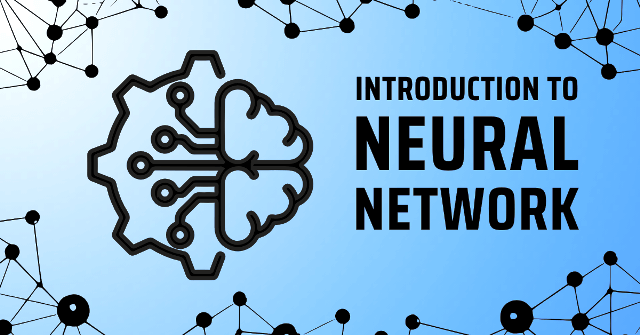Neural networks are transforming everything from healthcare to Hollywood. They’re not just the backbone of modern AI but a thrilling intersection of computer science, biology and human cognition.
If you’ve ever wondered how machines recognize faces, drive cars, or write poetry you’re already brushing up against the world of mastering neural networks. From coding frameworks to decoding the brain this guide takes you deep into the tech reshaping our reality.
Whether you’re a coder, a thinker or just curious, this journey through neurons, spikes, brain codes and code itself will leave you seeing the future more clearly.
In this comprehensive blog we’ll break down key ideas like Named Entity Recognition (NER) Semantic Role Labeling and Optogenetics. We’ll also explore how brain machine interfaces and neuroprosthetics are bringing AI closer to how humans think and feel. Along the way you’ll see how theory meets practice, science meets philosophy and logic meets emotion.
What are Neural Networks and Why Do They Matter?
Neural networks resemble artificial brains. They try to mimic how biological neurons in your brain process information. Instead of gray matter they use math and code. Neural networks are made of layers. Each layer is filled with artificial neurons that receive data, do some calculation and pass it along. The beauty lies in how these layers stack, learn and adapt.
Why do they matter? Because they power everything from Siri to self-driving Teslas. They read your handwriting, detect diseases in MRIs and even write news articles. But their importance goes beyond gadgets.
Neural networks challenge us to ask big questions. Can machines learn like humans? Can we upload memory? Can code feel? In the U.S., major players like Google, Microsoft and OpenAI are pouring billions into neural networks for one simple reason they’re the engine of next-gen intelligence.
Core Concepts in Neural Network Architecture
At their core, neural networks use layers: input, hidden, and output. Data enters through the input layer. It’s processed in hidden layers, where activation functions determine whether each node fires, much like real neurons using spikes or action potentials. Finally, the result pops out from the output layer.
Every neuron in the network has weights and biases, and learning is just tweaking those values to minimize error. This happens through gradient descent, a method that gently nudges the network in the right direction. Sparse coding, inspired by how grandmother cells in the brain respond to specific faces or objects, helps networks stay efficient and focused.
Here’s a table comparing different architectures:
| Architecture | Use Case | Biological Analogy |
| Feedforward | Text classification | Visual cortex |
| Recurrent (RNN) | Speech recognition | Auditory pathways |
| Convolutional (CNN) | Image processing | Retina |
| Transformer | Language modeling | Long-term memory |
These core ideas form the base for more advanced thinking whether in AI labs or in understanding how the motor cortex plans your next move.
Deep Dive into Learning: Backpropagation and Beyond
To learn, a network needs to know when it’s wrong. That’s where backpropagation comes in. between predicted and actual output. This process involves loss functions and gradients—math that guides improvement step by step.
But AI doesn’t stop at backpropagation. Newer ideas like contrastive learning and self-supervised models allow machines to learn from fewer labeled examples. Just like a baby learning to walk by trial and error, networks explore and refine.
Think about memory encoding and synaptic plasticity and how experiences reshape the brain. AI researchers are borrowing these principles to build models that remember, forget and adapt. In computational neuroscience these learning rules mirror how real brain codes operate blending AI with biology.
Hands on with Neural Networks: Code, Tools and Frameworks
You don’t need a PhD to get started. Just Python and curiosity. Popular frameworks like TensorFlow, PyTorch and Keras make it easier than ever to build your first model. You can train a network to recognize handwritten digits with less than 50 lines of code.
Here’s a brief snippet of training code with PyTorch:
import torch.nn as nn
import torch.optim as optim
model = nn.Sequential(
nn.Linear(784, 128),
nn.ReLU(),
nn.Linear(128, 10)
)
criterion = nn.CrossEntropyLoss()
optimizer = optim.Adam(model.parameters(), lr=0.001)
Tools like Google Colab offer free GPUs to experiment with models in the cloud. U.S based platforms such as Hugging Face and OpenAI provide ready made models for text classification, summarization and information extraction. These tools bring neural networks to your fingertips no matter your background.
Advanced Architectures and Real World Challenges
Neural networks have grown smarter but they still stumble in the real world. Transformers like GPT-4 can write like Shakespeare but struggle with basic logic. GANs create photorealistic images but are vulnerable to adversarial attacks, tiny changes that trick models into seeing things that aren’t there.
Networks also face problems of scale. Training a large model consumes massive energy. Deploying it on a smartphone? That’s another challenge. Even worse they can inherit human biases from data. Fixing these issues is an ongoing battle.
Take retinitis pigmentosa for example. Neural nets trained on retinal signals offer hope for vision restoration. But mapping artificial signals to actual neuronal activity requires advanced neural decoders often implanted via electrodes. It’s science fiction made real in labs today.
The Brain vs. The Network: Biological Inspiration or Illusion?
Neural networks may take cues from biology but they’re not brains. Real brains use optogenetics, temporal coding and population coding to process information. They operate with far fewer resources but vastly more nuance.
Think about grid cells and place cells in your hippocampus; they map space as you move creating a sort of internal GPS. Or the visual cortex which processes edges, color and motion. Neural networks borrow these ideas but simplify them.
Still AI researchers are closing the gap. Brain inspired architectures now include spiking neural networks that stimulate action potentials and timing. It’s part of the broader neuroscience and technology convergence movement toward machines that not only think but think like us.
Ethical, Societal and Philosophical Questions
As neural networks get smarter, we face deeper questions. Who’s responsible when an AI makes a mistake? If a model denies you a loan or diagnoses a disease incorrectly can you sue for a line of code?
In the U.S the White House has proposed an AI Bill of Rights to guide responsible development. At stake are issues like privacy, fairness and accountability. Coreference resolution understanding who’s who in a sentence might seem like a technical issue but it shapes how algorithms interpret people and power.
Then there’s the philosophical side. Can AI be conscious? Does it understand meaning or just mimic it? These aren’t just tech questions, they’re human ones. And as AI creeps into everyday life those questions will only grow louder.
Future Trends in Neural Network Research
The future is dazzling. Federated learning lets models train without sharing raw data boosting privacy. Neuro-symbolic AI combines neural nets with logical rules mimicking how humans reason. Quantum computing might one day shatter current limits.
U.S agencies like DARPA and NSF are funding cutting edge AI. And universities are exploring how cognitive mapping and spatial awareness can inform next gen robotics. The goal? It’s the process of adjusting weights based on error. The goal is to reduce the difference Systems that understand context, not just data.
Mastering neural networks means staying ahead of this curve learning the tools tracking the research and never forgetting the human element behind the machine.
Resources and Further Learning
If you’d like to explore further, begin with courses on Coursera, edX or Fast.ai. “Deep Learning” by Ian Goodfellow or “Neural Networks and Deep Learning” by Michael Nielsen are good books which provide solid foundations. GitHub hosts thousands of projects with real world code.
You can also explore newsletters like The Batch (from Andrew Ng) podcasts like Lex Fridman’s AI Podcast or YouTube channels like Two Minute Papers. For hands-on learning, Hugging Face offers pre-trained models in everything from word sense disambiguation to dependency parsing.
FAQ’s
What is an artificial neural network?
An artificial neural network is a computer program based on the human brain that processes data in layers of simulated neurons. It learns to forecast or make decisions.
How do artificial neural networks learn?
Artificial Neural networks learn via a process named backpropagation where the model updates weights to reduce errors and enhance its accuracy over time.
What is backpropagation?
Backpropagation is the neural network algorithm that is used to adjust weights based on the difference between predicted and actual outputs, in order to improve the performance of the neural network.
What are some uses of artificial neural networks?
Artificial Neural networks are applied in image recognition, speech, autonomous vehicles, medical diagnosis and even natural language processing (NLP).
What are the difficulties in applying artificial neural networks?
Artificial Neural Networks are hampered by issues such as computational expensive bias during training dataset complexity, inability to comprehend decisions (black-box nature) and vulnerability to adversarial attacks.
Conclusion
Mastering neural networks isn’t just about algorithms or math. It’s about exploring the edge between thought and technology. These models can help restore vision, decode brain waves and predict diseases if used wisely. Whether you’re coding an app or creating the next brain-machine interface, understanding these systems puts you in control of the future.
Stay curious. Keep learning. Because in the world of neural networks, today’s wild idea is tomorrow’s breakthrough.



